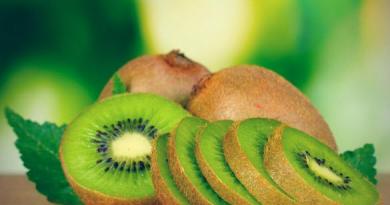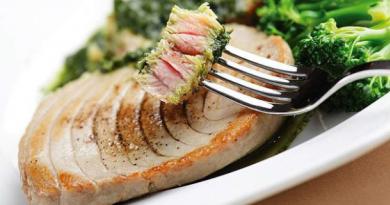Today, a real abundance of exotic fruits is presented on store shelves. Not all people know their correct name, and they don’t have the slightest idea about the taste qualities. In our article, we will take a closer look at the asterisk fruit. First of all, let's dwell on how it is correctly called and in which countries it grows. Also, be sure to consider how to choose a ripe fruit so that it pleases with excellent taste and is good for the body.
What is the star fruit called?
In Europe, this fruit is loved for its unusual shape. It is enough to cut it across - and the original decoration for the festive table is ready. In different languages, the name of the fruit of an interesting shape sounds differently - starfruit, carom, tropical star, star apple. And all of them perfectly characterize the appearance of the plant.
The correct name of the fruit with an asterisk, according to the scientific classification, sounds like this - carambola. It belongs to the oxalis family, a genus of woody plants Averroa. The fruits grow on trees with a dense crown, reaching a height of 3-5 meters, and wide leaves up to 50 centimeters long. Glossy to the touch has a ribbed surface. When cut, the fruit forms a five-pointed star.
Where does carambola grow?
The homeland of the fruit "asterisk" is Southeast Asia. In the wild, carambola grows on the island of Sri Lanka, in India and Indonesia. The plant is acclimatized in Brazil, Guyana, some US states (Hawaii, Florida), Israel. Forms from these countries are often imported to Russia.

Tourists can admire how carambola grows when visiting Thailand. The plant blooms several times a year. At this time, its crown is covered with beautiful, pink-lavender flowers. After about 2 months, green ribbed fruits are formed, inside of which there are several seeds. Fruit turns yellow as it ripens. The length of carambola does not exceed 15 cm. The fruit ripening period is May-August.
If desired, carambola is easily grown at home from an ordinary seed. The plant is unpretentious in care, shade-tolerant, not afraid of drafts. Requires medium watering.
The taste of an exotic fruit
We can say for sure that this fruit is very juicy. But his taste can be completely different. Unripe fruits, namely in this form they are removed from trees for subsequent import to Russia, are quite sour, with an unpleasant aftertaste. Such a fruit is more like a vegetable, such as a cucumber. Ripe fruits with massive ribbed outgrowths have a rather sweet taste. Carambola is often compared to gooseberries, apples, cucumbers, grapes, and even oranges. Several flavor notes are combined in one plant at once, which is why it is so difficult to describe this tropical fruit. Thanks to its high water content and sweet and sour refreshing taste, carambola easily quenches thirst.
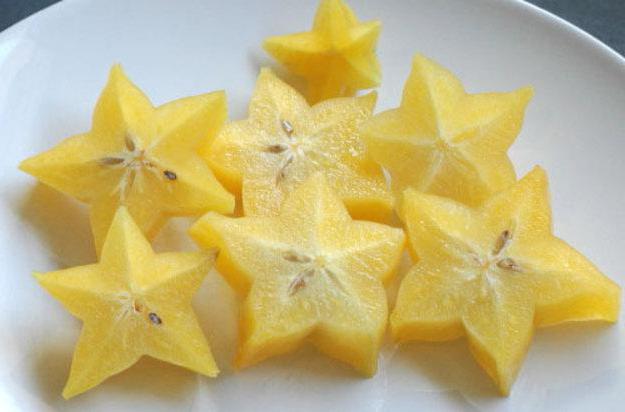
The "star" fruit in the cut has an almost regular shape of a five-pointed star, so it is often used for desserts. At home, carambola is stored in the refrigerator for about three weeks.
Composition and benefits for the body
One of the pleasant advantages of the star fruit is its low calorie content. 100 grams of juicy and ripe carambola contains only 34 kcal. The pulp contains a large amount of minerals important for the body (calcium, magnesium, sodium, potassium, phosphorus and iron), as well as vitamins (C, B1, B2, B5, beta-carotene).
- weakened immunity and beriberi;
- headaches, dizziness and fever;
- colic in the abdomen and constipation.
Sweet and sour tropical fruits of an unusual shape are a source of antioxidants, have an antimicrobial and antifungal effect on the body. The pulp of ripe carambola helps to reduce the level of glucose and cholesterol in human blood.
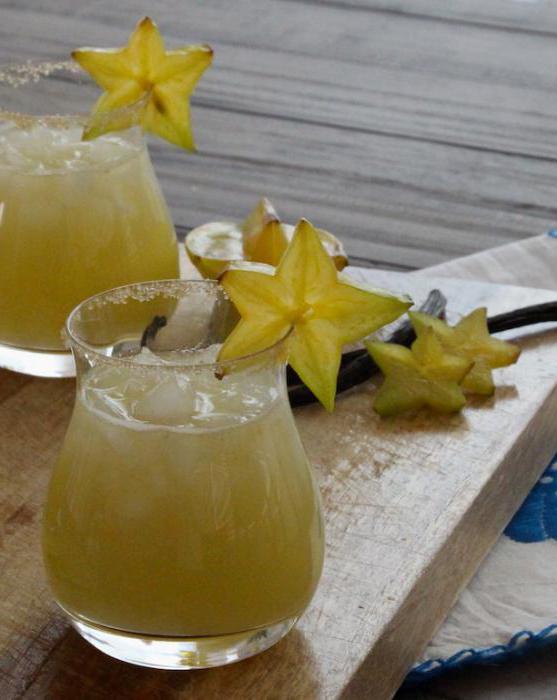
Asian healers use for medicinal purposes not so much the fruits as the leaves and flowers of the plant. But regular consumption of fruits will be enough to improve your condition and strengthen your health.
Harm and contraindications
Due to the high content of oxalic acid, carambola may not be as useful as it seems at first glance. People with diseases of the kidneys, stomach and duodenum should refrain from eating sweet and sour fruits with juicy pulp. Oxalic acid can aggravate the course of diseases such as gastritis and enterocolitis. At the same time, residents of Asian countries use the properties of this substance when removing stains, as well as when polishing copper and brass.
Excessive consumption of carambola fruits can cause intoxication. Signs of this condition are hiccups, vomiting, numbness, muscle weakness, or insomnia. Intoxication manifests itself within 1-14 hours after eating carambola.
How to choose ripe fruits?
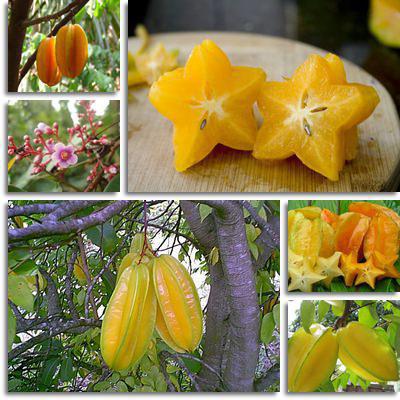
Only fruits that have ripened on the tree have a sweet taste and a pleasant smell of jasmine. They are distinguished by their characteristic bright yellow color and brown stripes on massive ribs. Unfortunately, they can only be purchased in places where carambola is directly grown. To import fruits from hundreds of kilometers away, they have to be picked while still green. Such fruits ripen directly on store shelves or in a home refrigerator.
In Russia, choosing ripe carambola fruits will be quite difficult. The "asterisk" fruit, presented in our stores, has a light green or pale yellow color. Until fully ripened and eaten, carambola should lie at room temperature for several days or in the refrigerator for up to three weeks.
How do you eat star fruit?
The unusual shape of carambola allows you to use the fruit cut into thin slices as a decoration for drinks, desserts, fruit salads and other dishes. However, the use of an exotic fruit with an asterisk in cooking is not limited to this.

In Asian countries, carambola is used in the preparation of many interesting drinks and dishes:
- Sweet and sour fruit juice is added to alcoholic and non-alcoholic cocktails, giving them an exquisite taste.
- Unripe fruits are used as vegetables and are subject to frying, stewing and pickling.
- Ripe carambola is boiled in syrup and served as a delicious dessert.
- Sweet, naturally ripened fruits are used in the preparation of jam, marmalade and jelly.
- In China, chefs add carambola to meat or fish dishes, and also prepare a delicious sauce from it.
When consumed raw, the fruits are not peeled, but eaten straight with a smooth and thin skin. First, carambola is washed well, removing dirt from the cavities and ribs, and then cut into 1 cm thick slices.


